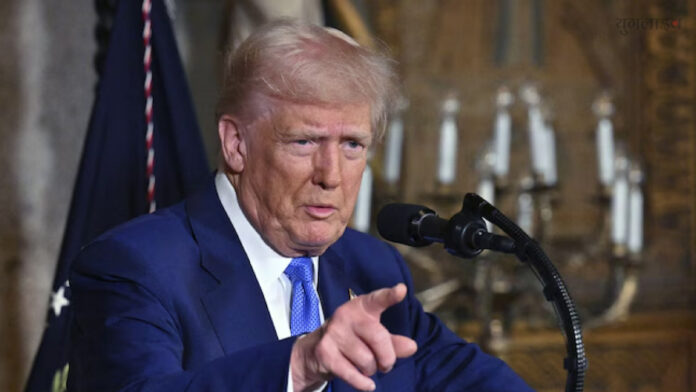WASHINGTON, D.C. — President Donald Trump announced Tuesday a sweeping new immigration initiative aimed squarely at wealthy foreign investors. The administration’s proposed “Gold Card” visa, priced at $5 million, offers a direct pathway to U.S. citizenship while replacing the decades-old EB-5 investor program. Trump claims the plan will attract high-net-worth individuals whose financial contributions could spur economic growth and help lower the nation’s mounting debt.
Commerce Secretary Howard Lutnick, speaking alongside the president in the Oval Office, emphasized the program’s economic benefits. “We’re going to end the EB-5 program and replace it with the Trump Gold Card, which is really a green card,” Lutnick said. He added that the new visa will target individuals who are “wealthy and successful,” ensuring that only those capable of creating jobs and generating tax revenues are approved after a rigorous vetting process.
Trump outlined an ambitious timeline, indicating that the gold card could be launched within two weeks. The president predicted high demand, suggesting that if the government were to sell one million gold cards, the resulting $5 trillion investment could make a significant dent in the nation’s $35 trillion debt. “As an example, a million cards would be worth $5 trillion,” Trump stated, adding, “And if you sell 10 million of these cards, that’s a total of $50 trillion – that would be really nice.”
The proposed visa marks a dramatic departure from the current EB-5 program, which was established by Congress in 1990. Under the EB-5 scheme, foreign investors can earn permanent residency by investing between $800,000 and $1 million in U.S. businesses that generate at least ten full-time jobs. Despite its long history, the EB-5 program has been plagued by criticisms including lengthy processing times and concerns over potential fraud. The Trump administration believes that by raising the investment threshold and simplifying the application process, the new “Gold Card” visa will eliminate many of these issues.
Global comparisons underscore the novelty of the proposal. Many countries, such as Portugal, Greece, and Malta, offer similar residency-by-investment programs—often referred to as “golden visas”—but at significantly lower price points. Trump’s insistence on a $5 million fee, however, signals an ambition to attract only the ultra-wealthy. “It’s somewhat like a green card, but at a higher level of sophistication,” Trump explained. “It’s a road to citizenship for people, and essentially people of wealth or people of great talent.”
While proponents argue that the influx of capital would benefit the U.S. economy by increasing consumer spending and creating jobs, critics contend that such a policy risks skewing immigration in favor of financial assets rather than merit or familial connections. Immigration advocates warn that commodifying citizenship could lead to a two-tiered system that prioritizes the rich over traditional pathways based on skills, family reunification, or humanitarian need.
Lutnick sought to reassure skeptics by stressing that robust vetting procedures would be in place. “These applicants will undergo thorough review to ensure they are, indeed, world-class global citizens who can contribute significantly to our economy,” he said. Yet legal experts remain cautious, questioning whether the administration’s executive approach to creating this new visa category might face challenges in Congress or in the courts.
The potential impact of the gold card extends beyond the realm of immigration policy. Trump suggested that proceeds from the program could be funneled toward reducing the national debt. “We have a great plan here,” he said, hinting that the revenue generated might eventually be used to balance the budget. However, details regarding how the funds will be allocated and the specific criteria for eligibility remain under wraps.
This policy shift is part of a broader effort by the Trump administration to overhaul the country’s immigration system—a strategy that has included aggressive deportation measures and policy reforms aimed at limiting traditional pathways to citizenship. As the government prepares for the rollout of the “Gold Card” visa, lawmakers and economic analysts will be closely scrutinizing its potential to reshape U.S. immigration and its wider economic implications.
For now, questions linger over the long-term effects of transforming citizenship into a commodity. Despite assurances from Trump and Lutnick that the plan is “totally legal” and strategically sound, critics insist that the initiative raises ethical questions and risks undermining longstanding values associated with U.S. immigration. As implementation details emerge in the coming weeks, the nation will be watching to see whether this bold experiment in “citizenship for sale” can deliver on its economic promises while preserving the integrity of America’s immigration system.




